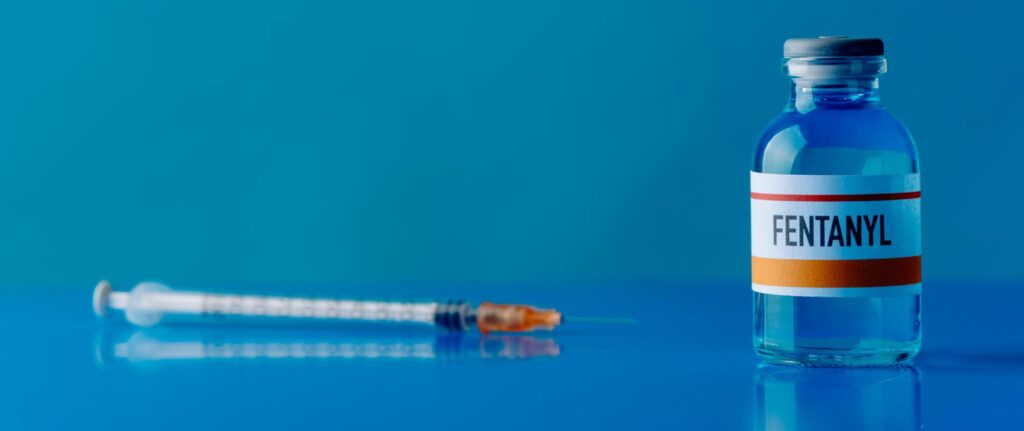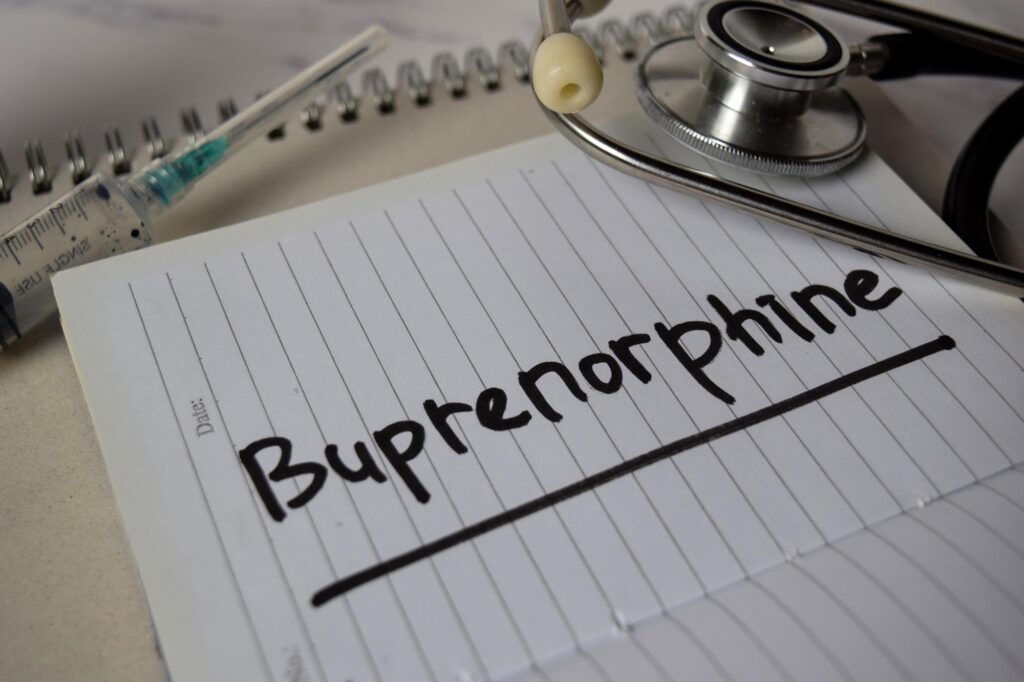If you’re struggling with fentanyl addiction, the fear of withdrawal can feel overwhelming. Many people ask us, “Can I just take a little fentanyl to stop the withdrawal?” It’s a natural question when facing the intense physical and emotional challenges of opioid withdrawal.
Fentanyl’s powerful grip on the brain and body makes withdrawal particularly challenging. This synthetic opioid is 50 times stronger than heroin, creating a dependency that can feel impossible to break. The thought of using small amounts to ease these symptoms might seem logical – but it’s crucial to understand why this approach can be dangerous.
We often hear questions like:
- “What if I just use tiny amounts to taper off?”
- “Can microdosing fentanyl help me avoid the worst withdrawal symptoms?”
- “How can I make withdrawal more manageable?”
These are valid concerns, and you deserve clear, honest answers about safe and effective treatment options. While the idea of using small amounts of fentanyl might feel like a solution, there are proven medical approaches that can help you navigate withdrawal safely and comfortably.
Let’s explore why microdosing fentanyl isn’t the answer – and what treatment options can truly support your journey to recovery. Your safety and well-being are too important to risk with unsafe withdrawal management methods.
Understanding Fentanyl Withdrawal
Fentanyl withdrawal brings intense physical and emotional symptoms that can feel overwhelming. Your body has become dependent on this powerful opioid, and stopping its use triggers a cascade of challenging effects:
Common Withdrawal Symptoms:
- Severe muscle aches and bone pain
- Intense anxiety and depression
- Uncontrollable sweating and chills
- Extreme nausea and vomiting
- Debilitating fatigue
- Powerful drug cravings
The withdrawal experience can feel impossible to push through, driving many to relapse despite their sincere desire to quit. This is a common scenario for those who have developed a fentanyl addiction, where recognizing the symptoms becomes crucial for finding effective treatment options.
Fentanyl’s withdrawal symptoms hit harder than other opioids because of its unique properties. This synthetic opioid binds extremely tightly to your brain’s opioid receptors – up to 50 times stronger than heroin. When you stop using, these receptors struggle intensely to readjust, creating more severe withdrawal effects.
But what exactly is opiate withdrawal? The intensity of these symptoms leads many people to ask: “Can’t I just take a little fentanyl to ease the withdrawal?” This thought process is understandable – you’re looking for relief from genuine suffering.
However, using “just a little” fentanyl is extremely dangerous. The margin between a dose that might ease withdrawal and one that could cause overdose is razor-thin. Even tiny amounts of this potent opioid can be fatal, especially when your tolerance has started to decrease.
The Risks of Using Fentanyl to Manage Withdrawal Symptoms

Using fentanyl to manage withdrawal symptoms creates a dangerous cycle that puts your life at risk. The idea of taking “just a little bit” to ease withdrawal might seem logical, but the reality is far more complex and potentially deadly.
Why microdosing fentanyl is extremely dangerous:
- A lethal dose of fentanyl is tiny – about 2 milligrams, equivalent to a few grains of salt
- Street fentanyl’s potency varies dramatically between batches
- Even experienced users can’t reliably measure such small amounts
- Tolerance fluctuates during withdrawal, increasing overdose risk
The path of using fentanyl to manage withdrawal symptoms keeps you trapped in addiction’s grip. Each dose – no matter how small – reinforces the brain’s dependence on opioids and prolongs the recovery process.
As a full opioid agonist, fentanyl powerfully binds to and activates opioid receptors in your brain. This intense activation makes precise dosing nearly impossible, even in medical settings. The margin between a dose that might ease withdrawal and one that could stop your breathing is dangerously narrow.
Your brain and body need time to heal from fentanyl’s effects. Continuing to introduce this potent opioid, even in small amounts, prevents this essential healing process and puts you at risk of fatal overdose. It’s crucial to understand that opioids should not be used as a crutch during withdrawal but rather managed under professional supervision for safety and effectiveness.
Microdosing Buprenorphine: A Safer Alternative for Withdrawal Relief

When you’re desperate to stop withdrawal symptoms, taking “just a little fentanyl” might seem like a quick fix – but there’s a safer, proven alternative: microdosing buprenorphine.
Buprenorphine is a partial opioid agonist used in Medication-Assisted Treatment (MAT). Unlike fentanyl, it partially activates opioid receptors, providing enough relief to manage withdrawal symptoms while reducing the risk of overdose and dependency.
The Bernese Method of Microdosing
The Bernese Method of microdosing buprenorphine offers a gentler path to recovery:
- Start with tiny doses (0.5mg or less) while still using your regular opioids
- Gradually increase buprenorphine while decreasing other opioid use
- Allow your body to adjust smoothly without shocking your system
This approach differs from traditional methods where you’d need to wait until you’re in full withdrawal before starting buprenorphine. The benefits of microdosing include:
- Reduced risk of precipitated withdrawal
- Greater comfort during transition
- Higher success rates in treatment retention
- Easier adjustment to maintenance therapy
Many people find microdosing buprenorphine helps them bridge the gap between active addiction and recovery with less discomfort and fewer complications. Under medical supervision, this method can provide the relief you’re seeking without the dangers of continuing fentanyl use.
How Microdosing Buprenorphine Works in Managing Fentanyl Withdrawal Symptoms
The microdosing process begins with tiny amounts of buprenorphine – as little as 0.25mg – while continuing regular fentanyl use. Here’s what the journey typically looks like:
Days 1-2:
- Start with 0.25mg buprenorphine once daily
- Continue normal fentanyl use
- Monitor for any adverse reactions
Days 3-4:
- Increase to 0.5mg buprenorphine twice daily
- Begin gradual reduction in fentanyl use
- Track withdrawal symptoms
Days 5-7:
- Steadily increase buprenorphine doses
- Further decrease fentanyl intake
- Add comfort medications as needed
Medical supervision remains essential throughout this delicate transition. Your care team will:
- Monitor vital signs
- Assess withdrawal symptoms
- Adjust dosing schedules
- Provide 24/7 support
Supporting medications can help manage specific symptoms:
- Anti-nausea medications for stomach discomfort
- Sleep aids for insomnia
- Anti-anxiety medications for emotional support
Behavioral therapy works alongside this medication protocol to:
- Build coping skills
- Address triggers
- Create healthy routines
- Strengthen recovery mindset
This carefully structured approach allows your body to adjust gradually, reducing withdrawal severity while building a foundation for lasting recovery.
Comparing Microdosing Buprenorphine vs. Traditional Induction Methods for Fentanyl Addiction Treatment
Challenges of Traditional Buprenorphine Induction
Traditional buprenorphine induction requires patients to experience moderate to severe withdrawal symptoms before starting treatment. This approach can be particularly challenging for individuals using fentanyl, as the withdrawal symptoms can be intense and overwhelming. Many patients struggle to reach the necessary withdrawal state, leading to discomfort and potential treatment dropouts.
Benefits of Microdosing
Microdosing offers a gentler path to recovery. By gradually introducing small amounts of buprenorphine while patients continue their regular opioid use, this method:
- Minimizes withdrawal discomfort
- Reduces the risk of precipitated withdrawal
- Allows for a smoother transition to maintenance therapy
- Helps maintain daily functioning during the induction phase
Research Supporting Microdosing
Research supports the effectiveness of microdosing. A 2021 retrospective cohort study found that a low-dose buprenorphine induction protocol, which included overlap with full opioid agonists, resulted in a successful transition for 82% of hospitalized patients. Additionally, only 39% reported experiencing mild withdrawal symptoms, highlighting the protocol’s potential to improve comfort and completion rates during induction.
Value of Microdosing for High-Potency Opioid Users
The microdosing method proves particularly valuable for individuals using high-potency opioids like fentanyl. Its gradual approach helps maintain stability during the critical early stages of treatment, increasing the chances of successful long-term recovery.
Comprehensive Care Beyond Medication-Assisted Treatment for Long-Term Recovery
While Medication-Assisted Treatment is a crucial part of the recovery process, it alone isn’t sufficient for achieving lasting recovery from fentanyl addiction. A successful healing journey merges MAT with personalized counseling and behavioral therapies that tackle the root causes of addiction.
Your treatment team will collaborate with you to devise a comprehensive care plan that might encompass:
- Individual Therapy – Engage in one-on-one sessions with a counselor to process trauma, develop coping skills, and build resilience.
- Group Support – Connect with others who understand your struggles while acquiring valuable recovery tools.
- Family Counseling – Mend relationships and establish a robust support system for your recovery journey.
- Holistic Practices – Explore healing through mindfulness, meditation, art therapy, or movement practices.
At SoCal Detox, our addiction medicine professionals tailor treatment plans based on your unique needs, challenges, and goals. We assist you in developing practical strategies for:
- Managing triggers and cravings
- Building healthy relationships
- Creating meaningful daily routines
- Addressing co-occurring mental health conditions
- Establishing a sustainable recovery lifestyle
These tools and support systems work in tandem with your medication treatment to help you build a strong foundation for long-term healing and growth. As part of our holistic approach, we also offer a range of addiction treatments designed to support your recovery journey in Orange County.
Conclusion
Attempting to manage fentanyl withdrawal alone through “microdosing” puts your life at risk. The path to recovery requires professional medical supervision – there’s simply no safe way to self-manage fentanyl withdrawal.
At SoCal Detox, we understand the intense challenges you’re facing. Our experienced team provides evidence-based treatments, including carefully monitored medication-assisted options, in our peaceful Laguna Beach facility. We create personalized care plans that address your unique needs and circumstances.
Our fentanyl detox program is designed to help you navigate the difficult withdrawal process safely and effectively. We also provide comprehensive support for those detoxing from other opiates, ensuring you know what to expect during this challenging time.
Ready to take the first step? You don’t have to face withdrawal alone. Contact us today at SoCal Detox – we’re here to help you begin your journey to lasting recovery in a safe, supportive environment.
FAQs (Frequently Asked Questions)
Can I just take a little fentanyl to stop withdrawal symptoms?
Using small amounts of fentanyl to manage withdrawal is unsafe and not recommended. Due to fentanyl’s high potency as a full opioid agonist, even microdosing carries significant overdose risks and perpetuates addiction rather than aiding recovery.
What are the typical symptoms of fentanyl withdrawal?
Fentanyl withdrawal symptoms can be severe and include intense cravings, muscle aches, sweating, anxiety, nausea, and insomnia. The potency and receptor binding of fentanyl often make these symptoms more intense compared to other opioids.
How does microdosing buprenorphine help with fentanyl withdrawal?
Microdosing buprenorphine involves gradually introducing low doses of this partial opioid agonist to ease withdrawal symptoms. This method reduces the risk of precipitated withdrawal and allows for a safer transition onto medication-assisted treatment (MAT) for opioid use disorder.
What are the benefits of microdosing buprenorphine compared to traditional induction methods?
Microdosing buprenorphine improves patient comfort by avoiding moderate withdrawal before starting medication. It enhances retention in treatment programs, especially for individuals dependent on high-potency opioids like fentanyl, and evidence shows it leads to better treatment outcomes.
Why is professional medical guidance important when managing fentanyl withdrawal?
Fentanyl withdrawal management requires careful medical supervision due to the drug’s potency and associated risks. Professionals can provide personalized treatment plans combining medication-assisted treatment with counseling and behavioral therapies for holistic and sustainable recovery.
What comprehensive care options support long-term recovery from fentanyl addiction?
Long-term recovery involves combining medication-assisted treatment with counseling, behavioral therapies, and support from addiction medicine professionals. Developing sustainable strategies beyond detox helps address underlying issues and supports lasting sobriety.

